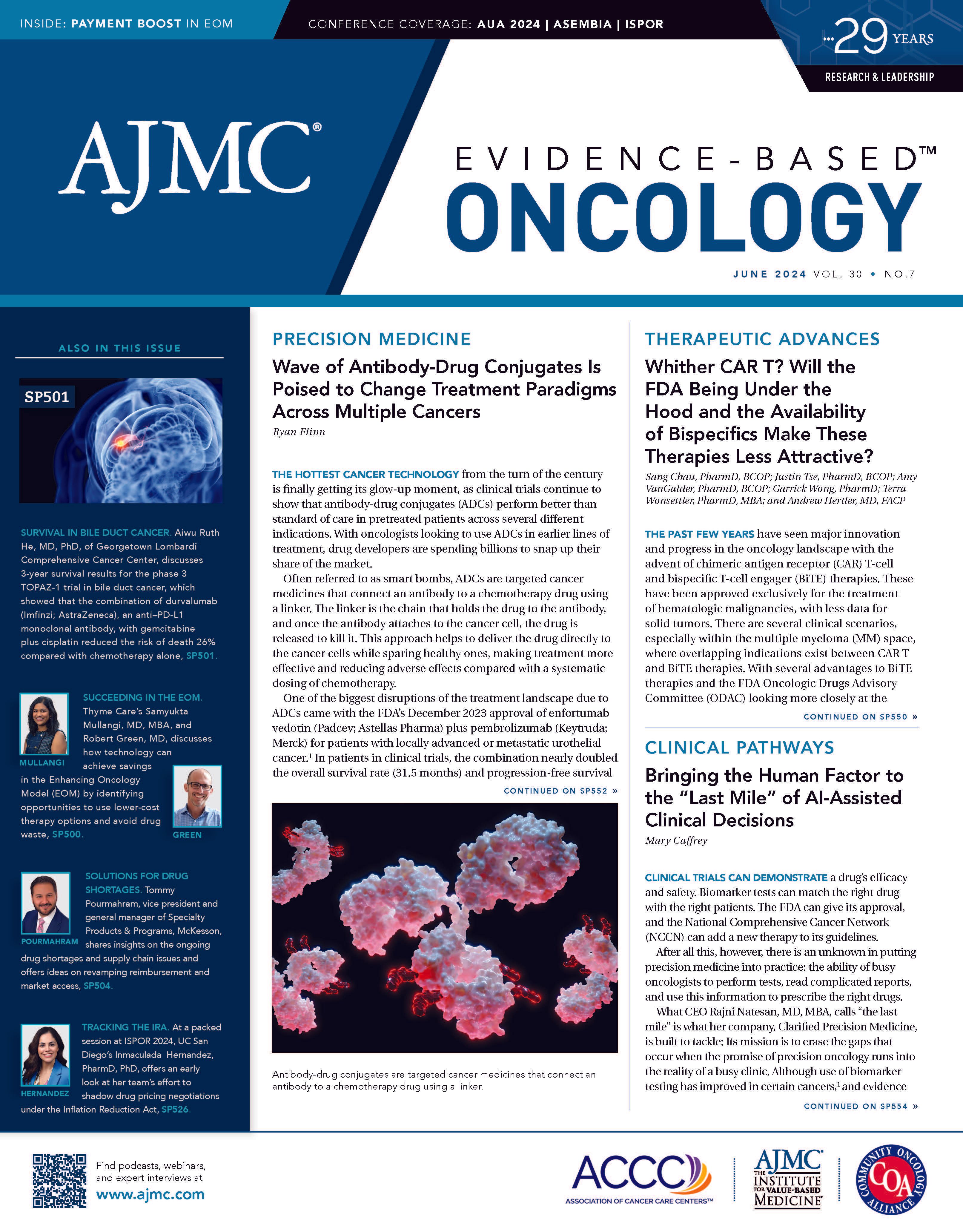- Center on Health Equity & Access
- Clinical
- Health Care Cost
- Health Care Delivery
- Insurance
- Policy
- Technology
- Value-Based Care
Chart Abstraction Pilot Improves Data Accuracy
Interview on Ontada research presented at ISPOR 2024.
Use of real-world data in research demands that data pulled from electronic health records are accurate. New research from Ontada shows how doing a pilot ahead of the main chart abstraction process can identify and correct potential error sources, thus ensuring high-quality data.
Sarah Spark, MHA, MBA | Image: Ontada

A poster presented May 7, 2024, at ISPOR—The Professional Society for Health Economics and Outcomes Research detailed the chart abstraction pilot. Sarah Spark, MHA, MBA, director, clinical data quality for Ontada, presented the findings and spoke with Evidence-Based Oncology about the results.
In a typical data-gathering process, Spark explained, chart abstractors pull individual data points for a given study, which can vary from how treatment was sequenced to whether patients were hospitalized. Then, a reviewer goes back through the data to ensure the chart abstraction is accurate.
The pilot process featured a 60-minute education session on the clinical variables to be pulled for the specific study, she said. Abstractors then pulled data from 2 charts each over a 2-week period and investigators calculated an accuracy rate: the number of correctly abstracted variables divided by the total number of variables observed. Abstractors received reeducation if they had an accuracy rate on an individual variable below 80% or if their overall accuracy rate was below 90%.
Abstractors then completed data abstraction on the remaining charts and this process was reviewed for accuracy. Investigators found that the mean accuracy rate for 15 studies during the pilot phase was 94.5%, while the mean fully study accuracy rate was 97.1%. This was “a statistically significant increase over the mean pilot accuracy rate (P = .046),” investigators wrote.
Previously, Spark said, “we didn’t necessarily always do the pilot.” “But what we learned from doing the pilot and getting the metrics is that we can then reeducate specific chart abstractors on specific variables.”
Variables that required reeducation included clinical characteristics and treatment history, they wrote. The need for the pilot process becomes clear, Spark said, as more research involves unstructured data, which calls for abstractors to look deep into the charts for the right data.
Results from this new analysis demonstrate the value of the pilot. “It increases the quality,” Spark said. “Instead of just giving someone 500 charts and saying. ‘Good luck,’ you’re saying, ‘You need to do these 2 charts, [and] I’m going to do source data verification or [quality control] on them. And now they have the opportunity to say, ‘Yes, now I’ve learned. Now I know how to extract it.’”
Reference
Reinwald S, DiIullo S, Fonseca L, et al. Implementing a pilot chart abstraction period improves the overall accuracy rate in chart abstraction. Value Health. 2024;27(6):S1,RWD111.

